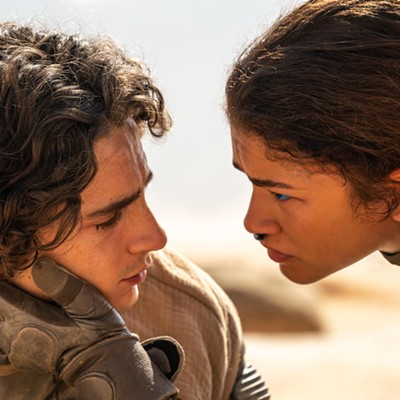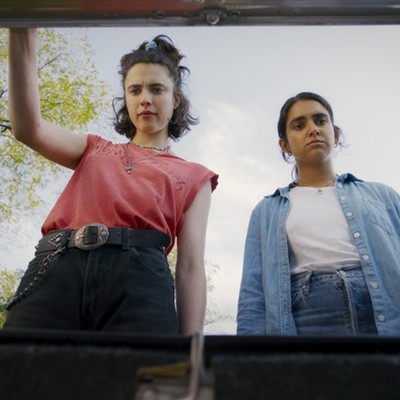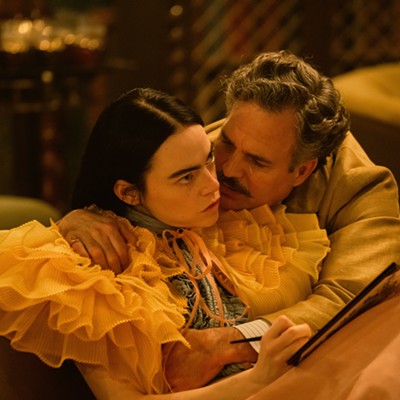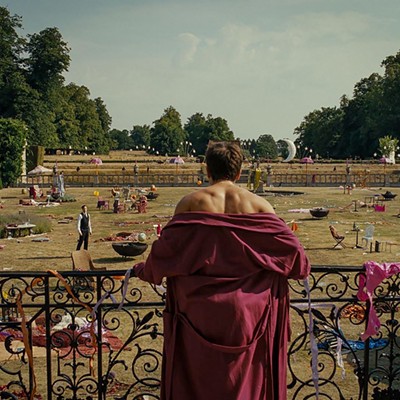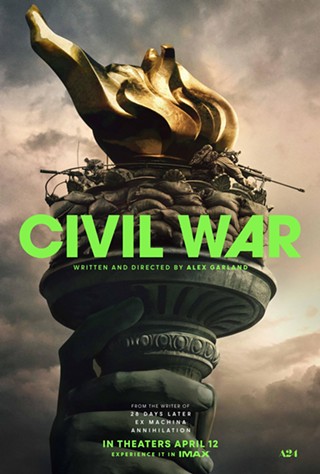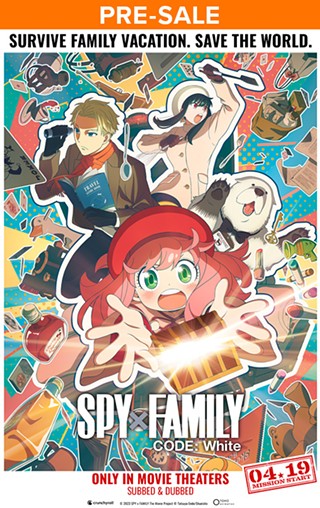No, wait, that's what I like least about cartoons.
Luckily, Persepolis somehow manages to both be a cartoon and not include a talking version of something that doesn't normally talk. Instead, it's about the coming of age of Marjane Satrapi, who was in grade school when the Iranian revolution came along.
She was also in Iran, which was a bad place to be during the revolution, in spite of the hopes of her parents and many intellectuals that the end of the Shah's reign would be the beginning of an egalitarian state. Unfortunately, a bunch of cave-dwellers somehow managed to take over the most modern country in the Middle East, converting it overnight from a fashionable, fascist dictatorship into the kind of place where armed 16-year-olds patrol the streets for signs of uncovered ankles and inappropriate happiness.
Satrapi originally told her story in the comic book Persepolis, from which the movie is slavishly adopted. The animation neatly matches Satrapi's drawings, which are heavily inked primitives with an emphasis on cartoony expressiveness.
They're charming, and Satrapi and her co-director Vincent Paronnaud have done a good job bringing them to the screen. The film is a lock to get the Academy Award for best Animated Feature Film, which isn't saying much since Persepolis is a gripping portrait of a young woman's travels across cultures, and the competition is a film about a rat who can cook and a penguin who can surf.
Still, Persepolis is good stuff, and the art is the first part of that. It's hard to imagine that there's anyone who isn't sick of seeing the standard, 3-D, computer-generated "cartoons" that clog our movie theaters with their Hollywood in-jokes and B-list celebrity voices. (Yes, Jerry Seinfeld, you are now on the B-list.) It was an eye-catching style when it was first introduced, but now that it's virtually the only style you see, it's kind of like eating nothing but candied ham every day for four years. You know, because candied ham is, like, overly sweet and, umm, hammy.
In Persepolis, the black-and-white renderings are refreshingly two-dimensional, and they grow and growl across the screen in the style of old-fashioned cartoons from the '30s. There's no Shrekian need for consistency in the images, and this freedom allows for a great deal more expressiveness. In fact, I wish they had been more expressive, because when the animators let themselves go, the film acquires some serious force.
Most of the film is in black and white, except for a few brief scenes in and around airports. I'll let you figure out why airports are colored, but it's a neat trick and a compelling riddle.
While the art is cool, the story is really at the heart of Persepolis, and it doesn't fail, mostly due to the way the characters are brought to life. Marjane's grandmother fills her bra each day with flowers, spits on the ground when she sees women with headscarves and smokes something illicit while telling Marjane that first marriages are just practice for second marriages.
Marjane's uncle, a communist revolutionary, makes swans out of bread to pass the time in prison; her mother presents a modern, human face in a country that seems intent on heading back in time; and her father has a warm intimacy and worldly wisdom that dispels stereotypes and enriches the story.
Mostly, though, the film belongs to Marjane. As war breaks out in Iran, she heads to Vienna; discovers punk rock, love and anarchists; plays the fool; grows up and out; and hears echoes of her homeland. She's painfully real, and there's no attempt to make her heroic or perfect. Rather, she's an ordinary teenager facing unusual circumstances, and her occasional cruelties and mopey depressions make her more compelling than any storybook hero.
My only complaint about the film, and it's a small one, is that it's subtitled and not dubbed. That makes sense in live-action films, but with a cartoon, it's hard to see why decent voice actors couldn't have been found, keeping the on-screen imagery free from the visual litter of subtitles.
Still, the voices (mostly in French) are excellent. Chiara Mastroianni (daughter of Marcello Mastroianni and Catherine Deneuve, whose voice is also in the film) really captures teenage stubbornness in her characterization of Marjane, and Danielle Darrieux is loopy and fun as Marjane's grandmother.
The acting, both in the voices and in the drawn expressions of the characters, transcends the two-dimensionality of the images, so much that even those few Grinch-like characters who refuse to see cartoons would probably still enjoy Persepolis. This is a rare example of a well-financed animation film that isn't aimed at children--and that succeeds at being grown-up.

